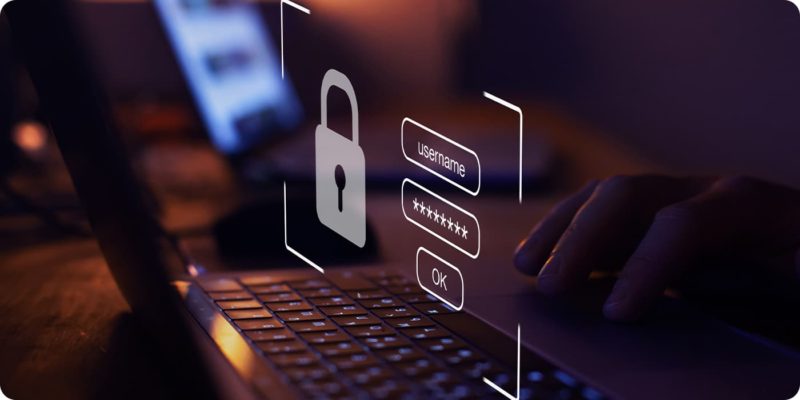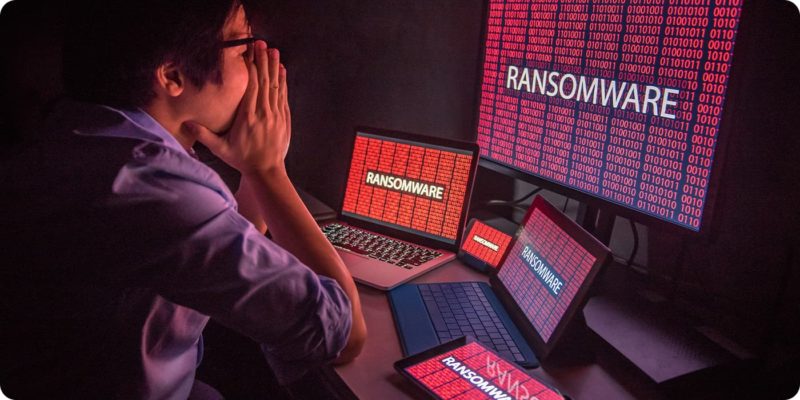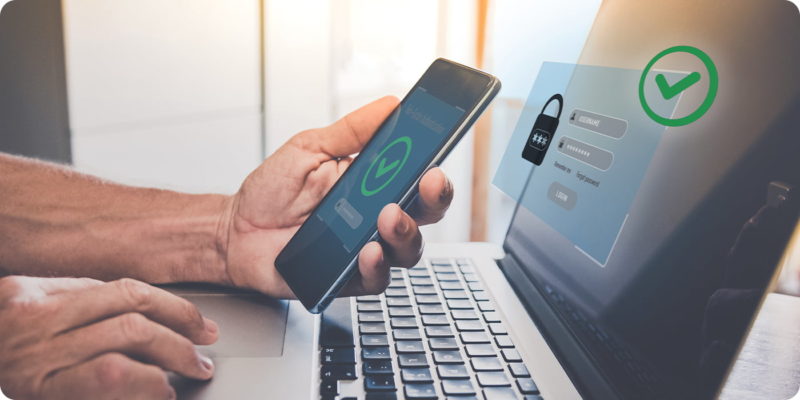Most of us nowadays have a device that connects to the internet and it’s crazy to believe that the average internet user spends 397 minutes online every day. When using the internet we open ourselves up to an unlimited source of information, communication, and entertainment. Whether that is with friends, family or by yourself, it’s safe to say we love the internet!
Unfortunately, using the internet comes with risks. These risks can range from minimal to potentially dangerous risks. This is where cyber security comes in.
Cyber security refers to the practice of protecting all of your internet-connected devices as well as yourself online. Cyber security includes protecting yourself and others from threats such as hacking, malware, phishing, and ransomware attacks.
Cyber security measures can range from technical solutions such as firewalls and encryption to behavioural practices such as keeping passwords strong and ensuring employees are trained.

Importance of cyber security
The importance of cyber security spans across both business and personal circumstances. Without the thought of cyber security and an understanding of what threats exist, you can put both yourself and others at risk.
Protecting sensitive information
Cyber security helps protect sensitive information such as personal data, financial information, files and documents, and intellectual property from theft or unauthorised access. Ensuring the correct practices are followed to protect sensitive information will help reduce the risks of having the data shared and used maliciously.
Maintaining privacy
Cyber security helps maintain the privacy of yourself and others around you. Following the correct cyber security practices will help stop unauthorised access to personal information and communications. When correct practices are ignored you run the risk of allowing access to your network, devices, and documents without knowing.
Preventing financial losses
Financial loss can come in many forms. Following correct cyber security practices can help minimise the potential for financial loss. Financial loss could be caused by sensitive information being leaked, regulatory fines caused by data leaks or scams, and fraud.
Ensuring business continuity
Cyber security helps ensure that businesses and individuals can continue to operate in the event of a cyber attack by protecting critical systems and data. Having the right policies and procedures in place can help identify threats, attacks, and leaks faster as well.
Maintaining trust
Cyber security is essential for maintaining trust in the digital world. Individuals and organisations must trust that their information and systems are secure in order to fully participate in the digital economy. Customers and individuals are also at risk when cyber security best practices are not followed.
Compliance with regulations
Many industries and businesses are subject to strict regulations that require them to maintain a minimum level of cyber security. These regulations are in place to generally protect sensitive information and customers. These regulations often include requirements to audit and disclose their security measures.
Cyber Security for Businesses
Cyber security in business is critical to ensuring every part of the business can operate as effectively as they can. Each department within a business have their own requirements and every one of those must be thoroughly tested and regularly audited to ensure it meets cyber security compliance.
Cyber security protects all categories of data from theft and damage. This includes sensitive data, personally identifiable information (PII), protected health information (PHI), personal information, intellectual property, data, and governmental and industry information systems.
Many industries have strict regulations when it comes to cyber security. These industries include financial, telecommunications, public sector and more.
There are various cyber security standards including IASME Governance Standard, ISO 27001 and Cloud Controls Matrix (CCM). All of these have their own requirements and are greatly recognised by many vendors and organisations.
As a business, you come up against a threat in every possible direction online. From phishing and malware to more serious network and data breaches. So, it is vital that you understand the threats and how to combat them.

Types of cyber security threats
Cyber security threats are frequent and damaging if allowed to take place. The threats are rapidly changing and evolving making it harder for individuals and businesses to keep up.
Malware
Malware is short for malicious software and refers to any program or piece of code that is primarily designed to cause harm or disruption to a computer or network. Malware can come in many forms including viruses, trojans, spyware, and ransomware. Malware is one of the most common cyber security threats.
Insights provided by a SEOS report In 2020, 61 percent of organisations experienced malware activity that spread from one employee to another. In 2021, that number rose to 74 percent, and in 2022, it hit 75 percent.
Phishing scams
A phishing scam is where someone tries to obtain personal information about you or your business. This information could be passwords, credit card numbers, or even money.
Often these phishing scams appear like they are from legitimate sources like a bank, business or local authority. They can come in many forms including texts, emails, websites or phone calls and may also already have other details about you. This can make them seem real and can gain your trust easier.
The end goal of a phishing scam is to trick the recipient into revealing their personal information, which can be used for identity theft or financial fraud.
Ransomware
Ransomware is a type of malicious software that encrypts a victim’s files. The attacker often demands a ransom payment from the victim to restore access, whether it is a person or a business.
Ransomware attacks can be spread unknowingly through phishing emails, malicious websites or security issues in code. When it spreads it can often spread without causing any harm until a specific date or action happens. This is how ransomware attacks have gained their reputation.
It is important to make sure you update software and regularly back up important data in order to prevent ransomware attacks and reduce the risk of data loss.
Mad-in-the-middle attacks
A man-in-the-middle (MITM) attack is a type of cyber attack where the attacker intercepts and alters the communication between two parties, posing as both the sender and the receiver. An attacker can utilise this to view the information your devices and network sends out to the internet.
Encrypting data and ensuring secure authentication methods are used can help protect your data from the attack.

Improve your cyber security
Protecting yourself online is a key factor in cyber security. From knowing how to spot suspicious behaviour to ensuring your devices, software, and online accounts are secured to the best they can be. Here are our 5 top tips on how to improve your cyber security.
Learning and training
Ensuring yourself and the others around you are fully aware of the threats is critical to making sure cyber security compliance is met. From understanding the risks if can impose as well as how to identify a potential risk will help dramatically reduce the threat of a cyber-attack.
Individuals and businesses can learn more about cyber security and the types of threats by enrolling in security courses and completing e-learning resources. There is lots of material online you can use to learn.
For example, employees at Giganet complete regular cyber security learning modules to ensure the company are well adverse in the threats they come across on a daily basis.
Strong passwords
Weak password account for almost all security incidents in a business.
A strong password can mean the difference between a full-blown security breach and a failed login attempt. Keeping your passwords strong means it will be more difficult for anyone with malicious intent to access your accounts.
A strong password should consist of at least 12 characters, use capital letters, symbols and numbers. In addition to that, try not to use common or relatable words.
We also recommend that you change your passwords at least every 12 months to ensure any potential password leaks are stopped in their tracks.
Secure your devices
Keeping your devices secure using pass codes, 2FA (Two Factor Authentication) and ensuring software is updated will help ensure your devices are as secure as they can be. Not only that, most devices including smartphones and laptops have anti-virus options available.
Anti-virus software can scan your computer files and the websites you visit. It can identify if anything looks suspicious and quarantine it. This not only keeps your device secure but also helps educate you on what malicious files and websites could look like.
Two-factor authentication
2FA (Two Factor Authentication) is a tool available across many popular applications and websites that allows you to use an email address or phone number as a second line of confirmation when logging in to an account. These include Facebook, Google Microsoft, Twitter, Adobe and the list goes on!
This solution acts as a second login where a code or link is sent to your chosen authentication method. When you receive this code or link, you can paste the code in or click the link to confirm it is you. This is a fantastic way to keep your accounts secure and only takes a few minutes to set up.
Regular updates and backups
Updating and backing your data up is super important, no matter how wise to online security threats you are.
Ensuring you update the software to the latest versions will help resolve security vulnerabilities in the software as well as introduce new security features. This includes devices such as laptops, mobile phones, tablets, TVs, routers, and even printers.
In addition, backing your data up will help you restore any data you may lose to a cyber security threat. Regular weekly or monthly backups can be stored on a separate device or online on your preferred cloud storage provider. Many operating systems offer their own backup solutions including Windows, IOS and Android.
Conclusion
Whether an individual or a business, cyber security should sit at the front of all your online activities. There are risks at every point and you must understand what those risks are to minimise the potential threat.
We’ve covered what cyber security is, what types of risks there are, and how to minimise those risks. There is a lot you can do to prevent cyber threats and much of it is fast, affordable and in some cases free.


